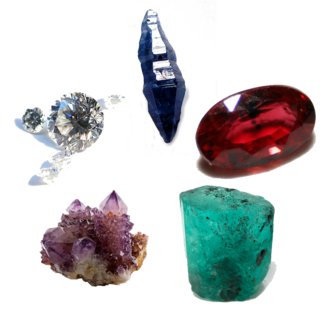
A gemstone is a piece of mineral crystal which, when cut or polished, is used to make jewelry or other adornments. Certain rocks and occasionally organic materials that are not minerals may also be used for jewelry and are therefore often considered to be gemstones as well. Most gemstones are hard, but some softer minerals such as brazilianite may be used in jewelry because of their color or luster or other physical properties that have aesthetic value. However, generally speaking, soft minerals are not typically used as gemstones by virtue of their brittleness and lack of durability.

Jewellery consists of decorative items worn for personal adornment such as brooches, rings, necklaces, earrings, pendants, bracelets, and cufflinks. Jewellery may be attached to the body or the clothes. From a western perspective, the term is restricted to durable ornaments, excluding flowers for example. For many centuries metal such as gold often combined with gemstones, has been the normal material for jewellery, but other materials such as glass, shells and other plant materials may be used.
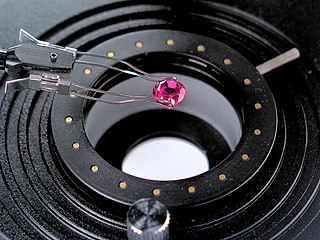
Gemology or gemmology is the science dealing with natural and artificial gemstone materials. It is a specific interdisciplinary branch of mineralogy. Some jewelers are academically trained gemologists and are qualified to identify and evaluate gems.
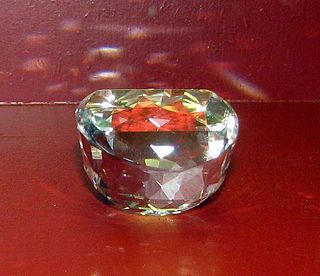
The Orlov, also often considered to be the same diamond known as The Great Mughal Diamond, is a large diamond of Indian origin, currently displayed as a part of the Diamond Fund collection of Moscow's Kremlin Armoury. It is described as having the shape and proportions of half a chicken's egg. In 1774, it was encrusted into the Imperial Sceptre of Russian Empress Catherine the Great.

The Small Diamond Crown of Queen Victoria is a miniature imperial and state crown made at the request of Queen Victoria in 1870 to wear over her widow's cap following the death of her husband, Prince Albert. It was perhaps the crown most associated with the queen and is one of the Crown Jewels on public display in the Jewel House at the Tower of London.
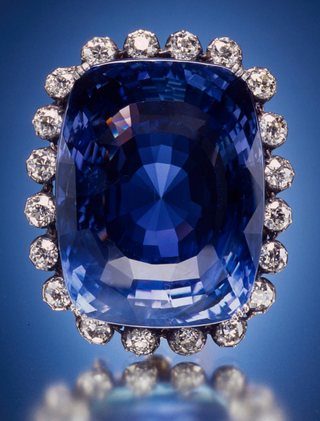
The Logan Sapphire is a 422.98-carat (84.596 g) sapphire from Sri Lanka. One of the largest blue faceted sapphires in the world, it was owned by Victor Sassoon and then purchased by M. Robert Guggenheim as a gift for his wife, Rebecca Pollard Guggenheim, who donated the sapphire to the Smithsonian Institution in 1960. The sapphire's name is derived from her new surname after marrying John A. Logan following Guggenheim's death. It has been displayed in the National Gem Collection of the National Museum of Natural History in Washington, D.C., since 1971. It is a mixed cushion-cut sapphire, approximately the size of a large chicken egg, and set in a silver and gold brooch surrounded by 20 round brilliant-cut diamonds.
The Swiss Gemmological Institute (SSEF) is a gemmology laboratory located in Basel, Switzerland. It is a part of the Schweizerische Stiftung für Edelstein Forschung. It was founded on an independent basis, by trade organisations, on August 22, 1972. George Bosshart, mineralogist and GG was the first director after the laboratory's opening in Zürich. Diamond grading was the major task and colour stones were tested rather exceptionally. In 1980 Bosshart hired Dr. Henry A. Hänni, Mineralogist and FGA. In 1994 Hänni moved the laboratory to Basel. He has been teaching gemmology at Basel university, and the close link to the university proved to be very enriching for both parts, academic and laboratory work. Hänni became professor of gemmology at Basel University, also a reward for his years of steady research and supply of publications. Prof. H.A. Hänni retired in 2009 and Dr. Michael Krzemnicki took over his position as a director. Dr. Krzemnicki has been working for SSEF since 1999.
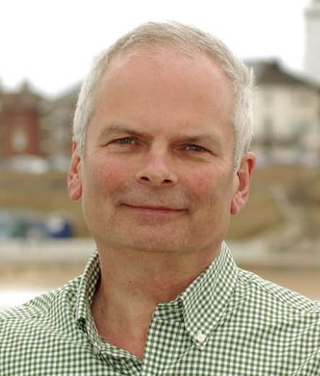
Geoffrey Charles Munn, OBE, MVO, FSA, FLS is a British jewellery specialist, television presenter and writer. He is best known as one of the specialists on the BBC's Antiques Roadshow.

The Mosaic egg is a jewelled enameled Easter egg made under the supervision of the Russian jeweller Peter Carl Fabergé in 1914. The Fabergé egg was made for Nicholas II of Russia, who presented it to his wife, the Empress Alexandra Feodorovna on Easter 1914. Its Easter 1914 counterpart is the Catherine the Great egg.
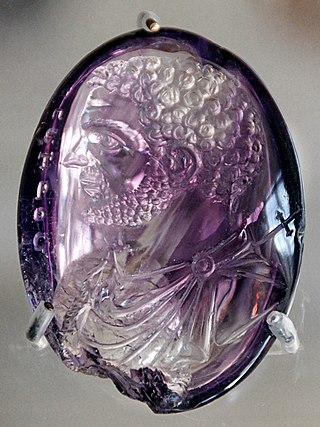
An engraved gem, frequently referred to as an intaglio, is a small and usually semi-precious gemstone that has been carved, in the Western tradition normally with images or inscriptions only on one face. The engraving of gemstones was a major luxury art form in the ancient world, and an important one in some later periods.

Hardstone carving, in art history and archaeology, is the artistic carving of semi-precious stones, such as jade, rock crystal, agate, onyx, jasper, serpentinite, or carnelian, and for objects made in this way. Normally the objects are small, and the category overlaps with both jewellery and sculpture. Hardstone carving is sometimes referred to by the Italian term pietre dure; however, pietra dura is the common term used for stone inlay work, which causes some confusion.
The Gemmological Association of Great Britain (Gem-A) is an international gemmology education and qualifications body based in the United Kingdom.
The Canadian Gemmological Association (CGA) is a Canada-wide professional organization which sets standards in the practice of gemology. It is a non-profit, educational organization, which provides a forum for Canadian gemmologists to meet and share experiences and knowledge about gemstones. The CGA acts as a liaison with governments in setting guidelines for the sale and marketing of diamonds, coloured stones and pearls, and helps to establish guidelines for gem and jewellery appraising in Canada.
Cally Oldershaw is a gemologist and science educator. She is the author of several very widely held books about gems. Oldershaw is Liaison Officer for the Geological Society of London and an examiner for the Gemmological Association of Great Britain.
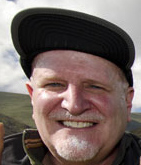
Richard W. Hughes is an American gemologist and author who is specialized in corundum, rubies and sapphires.
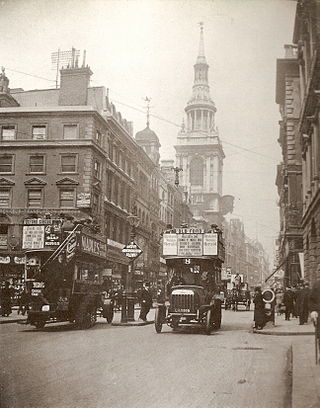
The Cheapside Hoard is a hoard of jewellery from the late 16th and early 17th centuries, discovered in 1912 by workmen using a pickaxe to excavate in a cellar at 30–32 Cheapside in London, on the corner with Friday Street. They found a buried wooden box containing more than 400 pieces of Elizabethan and Jacobean jewellery, including rings, brooches and chains, with bright coloured gemstones and enamelled gold settings, together with toadstones, cameos, scent bottles, fan holders, crystal tankards and a salt cellar.

The Sunrise Ruby has been the world's most expensive ruby, most expensive coloured gemstone, and most expensive gemstone other than a diamond until the discovery of the Estrela de Fura.
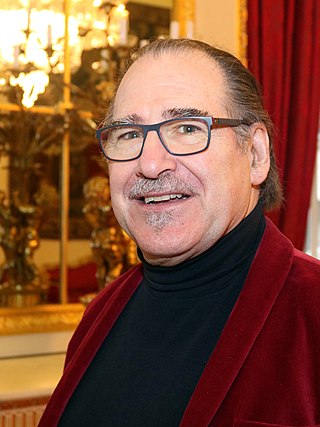
Jack Ogden, FSA, FGA, is a British jewellery historian with a particular interest in the development of Materials and technology. He is considered one of the foremost experts in his field. He is the current President of The Society of Jewellery Historians, having held the position since February 2018, and was appointed visiting professor of Ancient Jewellery, Material and Technology, at the Birmingham School of Jewellery Birmingham City University in 2019
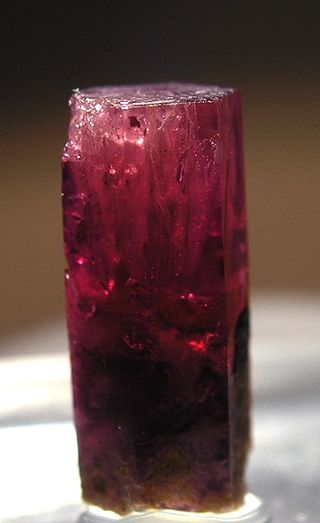
Red beryl, formerly known as bixbite and marketed as red emerald or scarlet emerald, is an extremely rare variety of beryl as well as one of the rarest minerals on Earth. The gem gets its red color from manganese ions embedded inside of beryllium aluminium cyclosilicate crystals. The color of red beryl is stable up to 1,000 °C (1,830 °F). Red beryl can come in various tints like strawberry, bright ruby, cherry, and orange.
Diana Mary Innes Scarisbrick (1928–2024), née Wood, was an English art historian specialising in the history of engraved gems and jewellery.















